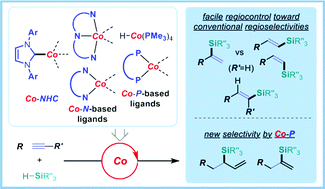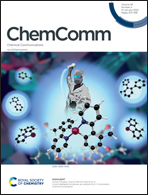Cobalt-catalyzed alkyne hydrosilylation as a new frontier to selectively access silyl-hydrocarbons
Abstract
The hydrosilylation of alkynes is a chief chemical method for accessing a range of alkenylsilanes, which can be derivatized to obtain value-added hydrocarbons and utilized in diverse applications. While noble metal-based catalytic procedures have shown great success in accessing vinylsilanes within the context of both academia and industry, replacing the noble metals with cheaper and more abundant base metals has recently drawn significant interest due to their catalytic sustainability and competencies including unprecedented reactivity that could expand chemical tools for accessing other types of silicon-containing hydrocarbons. During the past few years, a number of well-defined, robust cobalt-catalyst platforms that broadly operate either the Chalk–Harrod or a modified Chalk–Harrod mechanism have emerged as a new frontier in the field of selective alkyne hydrosilylation. This review describes the main features of cobalt catalyst systems recently documented for the hydrosilylation of alkynes with a strong emphasis on ligand design and reaction pathways involving Co–H and/or Co–silyl species-mediated elementary transformations to achieve Markovnikov/anti-Markovnikov hydrosilylations as well as new migratory transformations.

- This article is part of the themed collection: Chemical Communications HOT articles


 Please wait while we load your content...
Please wait while we load your content...